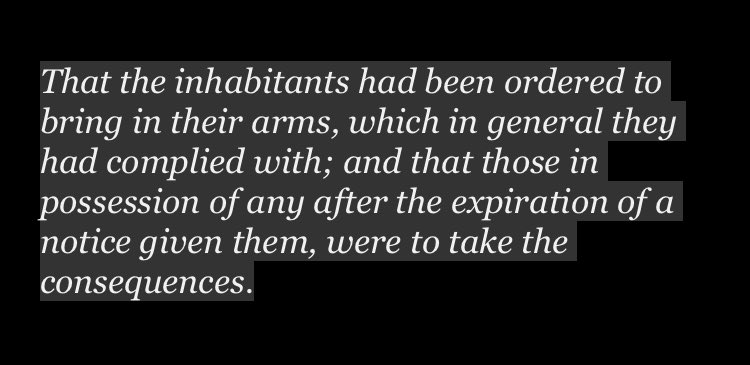Madison on the 2nd Amendment & militia clause
The Supreme Court in the Heller decision explained that the second amendment guarantees an individual right of the people to keep and carry arms for their defense in the event of a confrontation.
The anti-gun crowd, however, refuses to accept this common sense reading of the amendment. The best way to interpret the Constitution begins with actually reading it. The next best thing is to read what the Constitution’s chief drafter, James Madison, had to say about America’s founding document. Madison was the chief author of the Federalist Papers, along with John Jay and Alexander Hamilton. The Federalist Papers offer great insight into the political theories of the day that led to our system of government.
Students of the second amendment should be familiar with both Federalist 29 and 46, which discuss the role of an armed populace in protecting the precious freedom which had so recently been won. It was that thinking that led to the adoption of the second amendment.
Madison was also the original drafter of the Bill of Rights, including what would become the second amendment. The anti-gun crowd regularly accuse second amendment supporters of only focusing on what Justice Scalia called the operative clause of the second amendment, the phrase “the right of the people to keep and bear arms shall not be infringed.” They assert that we ignore the prefatory clause that reads, “A well-regulated militia being necessary to the security of a free state.” To them the prefatory clause confirms that the purpose of the amendment was to protect the right of the states to have militias or as they sometimes phrase it, the right to bear arms when in militia service.
However, beyond that, they never exactly explain what is meant by “the right of the people to keep and bear arms shall not be infringed.” The anti-gun crowd cling to the so-called collective rights view of the amendment that held sway with a number of federal circuit courts pre-Heller. However, beyond denying an individual right to keep and bear arms, those courts said precious little on exactly what the amendment actually protected.
It was commonly stated outside the court room that the operative clause meant that the federal government could not disarm the state militias. But that is not what the amendment says and no federal circuit court actually provided any reasoned discussion supporting such an interpretation. In any event, if that were what the amendment was meant to accomplish, one would think the amendment would have been written in some way like “A well-regulated militia being necessary for a free state, Congress shall not infringe the right of the states to arm the militia.” However, this interpretation of the amendment would have worked a radical transformation of Congress’s power over the militia.
The Constitution addresses the militia in Article I, Section 8. It states “The Congress shall have the power … To provide for calling forth the Militia to execute the Laws of the Union, suppress Insurrections and repel Invasions; To provide for organizing, arming, and disciplining, the Militia, and for governing such Part of them as may be employed in the Service of the United States, reserving to the States respectively, the Appointment of the Officers, and the Authority of training the Militia according to the discipline prescribed by Congress.”
Thus, it was Congress’s responsibility, not the states, to organize and arm the militia, with the states having only the responsibility to appoint officers and train the militia as Congress mandates. The militia is not treated by the Constitution as a creature of the several states, but of the nation as a whole to be organized, armed and disciplined by Congress, while being trained by the states as Congress directs.
Congress has in fact exercised this authority.
Title 10 of the United States Code, Section 311 defines the militia of the United States with certain exceptions as “all able-bodied males at least 17 years of age and … under 45 years of age who are, or who have made a declaration of intention to become, citizens of the United States and … female citizens of the United States who are members of the National Guard.”
The National Guard is the organized militia and the unorganized militia consists of those militia members not in the Guard. In the Second Militia Act, passed in 1792, Congress specified the arms militia members were to have. It was incumbent on militia members to report for training and duty with their own arms. The second amendment did not change Congress’s authority over the militia, nor was that the intent of the amendment. Most notably, the second amendment did not provide that the states would or could arm the militia. If that were the meaning of the second amendment, then states could be free to arm the militia in any way they saw fit.
States could for instance under the collective rights view of the second amendment, authorize each member of the unorganized militia to own a fully automatic weapon such as the M-16. That would raise issues with respect to the provisions of the National Firearms Act of 1934, which greatly restricts the ownership and transfer of automatic weapons. States could also abrogate many other federal firearm restrictions. It is certainly the case that some founders, such as Elbridge Gerry of Massachusetts, feared that Congress would neglect its responsibility to arm the militia. And so it is not an unreasonable view that a primary purpose of the second amendment was to ensure that the militia would not be disarmed by taking guns away from the people who constituted the militia.
However, that view is perfectly consistent with the wording of the operative clause, “the right of the people to keep and bear arms shall not be infringed.” The amendment thus ensured that there could be a body of the people armed and available to serve in the militia. It had nothing to do, however, with transferring to the states the right to arm or specify the arming of the militia. That remains the prerogative of Congress. Review of the legislative history of the second amendment confirms that it was designed to protect an individual right of the people generally to possess and carry arms.
When Madison initially introduced the various proposed amendments that would later become the Bill of Rights, he proposed to insert the bulk of them, including what would later become amendments one through five, part of the sixth amendment, and amendments eight and nine, into Article I, Section 9, between Clauses 3 and 4. His speech to Congress can be found here.
This is the portion of the Constitution which limits Congressional power over individuals. Clause 3 is the prohibition on Bills of Attainder and ex post facto laws.
Clause 4 is the limitation on the imposition of taxes directly on individuals as oppose to excise taxes on economic transactions. This clause has been substantially abrogated by the sixteenth amendment, authorizing the federal government to tax incomes. In other words, Madison proposed to put these amendments into that part of the Constitution that protected individual rights of the people from the federal government. The context of Madison’s original introduction to Congress of the Bill of Rights, including the second amendment, is powerful evidence supporting the conclusion that the right to keep and bear arms was intended to confirm an individual right of the people to arms.
Madison did not propose to place the second amendment in that part of the Constitution that governs Congress’s power over the militia. The obvious reason is that Madison was seeking to protect an individual right to keep and bear arms, not some undefined right of the states to arm or control militia members within their borders. Indeed, it was Madison himself who coined the phrase “Bill of Rights” to refer to the amendments he was proposing, including what would become the second amendment. States do not have rights. They have powers. Individuals have rights. In any event, the second amendment guarantees in its own words a right of the people, not a right of the states.




